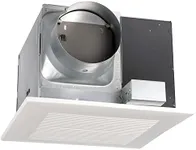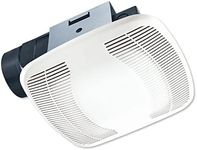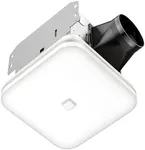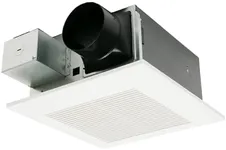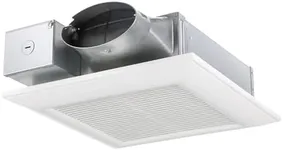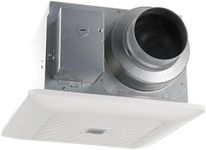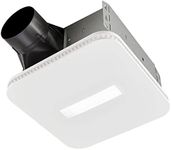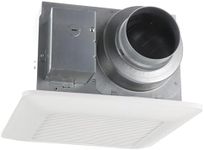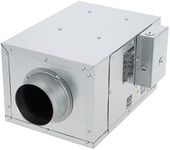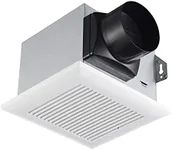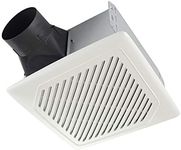Buying Guide for the Best Quietest Bathroom Fans
Choosing the quietest bathroom fan is all about balancing noise level with effective ventilation. A good bathroom fan helps remove moisture and odors, preventing mold and keeping your bathroom fresh. When shopping, focus on how much noise the fan makes, how much air it can move, and how easy it is to install and maintain. Understanding the key specifications will help you find a fan that keeps your bathroom comfortable without being disruptive.Noise Level (Sones)Noise level in bathroom fans is measured in sones, which tells you how loud the fan will be when running. A lower sone rating means a quieter fan. Fans typically range from less than 1 sone (very quiet, like a whisper) to 4 sones or more (noticeably loud). If you want a peaceful bathroom experience, look for fans rated at 1 sone or less. If noise isn't a big concern, higher sone ratings may be acceptable. Think about when and how often you'll use the fan—if you use the bathroom at night or want a spa-like atmosphere, a quieter fan is best.
Airflow (CFM)Airflow is measured in cubic feet per minute (CFM) and tells you how much air the fan can move. The right CFM depends on the size of your bathroom. Small bathrooms (under 50 square feet) usually need a fan with 50 CFM, while larger bathrooms may need 80 CFM or more. If your bathroom has a shower or tub, or if it tends to get steamy, a higher CFM is better. To pick the right CFM, measure your bathroom and match it to the fan's rating—this ensures moisture is removed efficiently without overworking the fan.
Installation TypeBathroom fans can be installed in the ceiling or wall, and some are designed for easy replacement of old fans. Ceiling fans are most common and work well for most bathrooms, while wall-mounted fans are good for rooms where ceiling installation isn't possible. Some fans are designed for new construction, while others are made for retrofitting into existing spaces. Consider your bathroom's layout and whether you're replacing an old fan or installing a new one—this will help you choose a fan that's easy to install and fits your needs.
Energy EfficiencyEnergy efficiency tells you how much electricity the fan uses. More efficient fans use less power, which is better for the environment and can save you money on your energy bill. Look for fans with an ENERGY STAR rating, which means they meet strict efficiency standards. If you plan to run your fan often or leave it on for long periods, an energy-efficient model is a smart choice.
Additional FeaturesSome bathroom fans come with extra features like built-in lights, humidity sensors, or timers. Lights can replace or supplement your bathroom lighting, while humidity sensors automatically turn the fan on when moisture is detected. Timers let you set the fan to run for a certain amount of time. Think about which features would make your bathroom more comfortable or convenient—if you want a set-and-forget solution, a humidity sensor or timer might be helpful.
